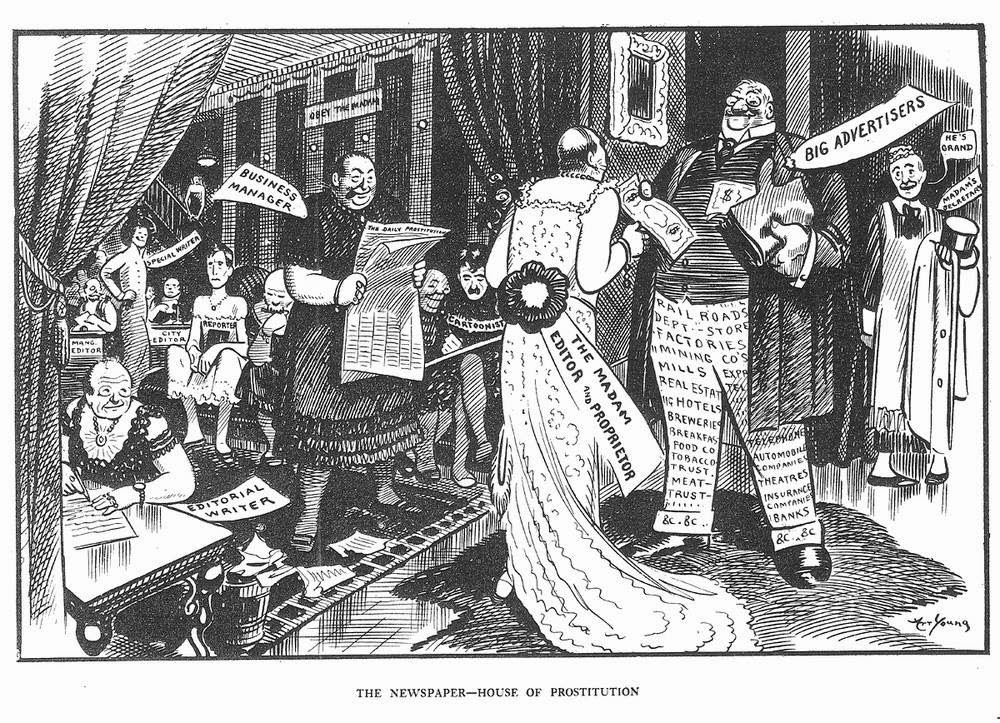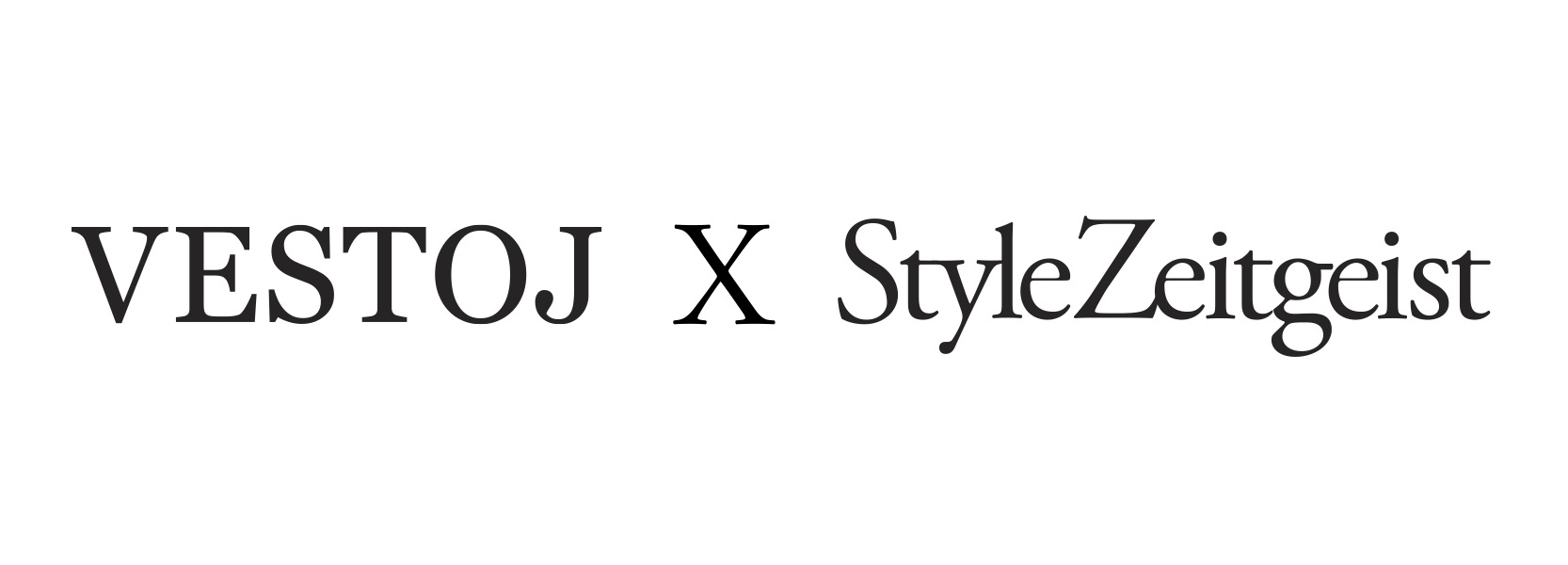Vestoj and Style Zeitgeist are teaming up for the coming weeks in an ongoing conversation and exchange of ideas. This dialogue will take the form of a series of critiques of recent articles in the fashion press with the aim of delving deeper into the state of contemporary fashion media – and what that says about our industry at large. In our first conversation we look closer at a text by Alexander Fury on Alessandro Michele of Gucci and Demna Gvasalia of Vetements and Balenciaga, recently published in New York Times’ T Magazine’s ‘The Age of Influence’ issue, in order to ask more wide-reaching questions about the role and significance of fashion writing today.

MANY ARE THOSE WHO today speak of the necessity of a ‘fashion revolution.’ Certainly there are some fundamental issues in the way fashion currently functions; the pressure on brands (high and low) to distribute garment collections at a faster pace, the question mark over the role of fashion weeks in the current climate (and the fashion show as the optimal model for displaying clothes), and the flux that the role of the ‘creative director’ of high fashion brands is currently undergoing – not to mention the ethical concerns that have dogged the industry for decades. In T Magazine’s ‘These Two Guys Are Changing How We Think About Fashion,’ Alexander Fury talks obliquely about rules that need to be broken, and implicates ‘the editors, the designers, the corporations’ as the manufacturers of these rules. But if the fashion system at large is at fault, what role does Fury and T Magazine (the editors) alongside Michele and Gvasalia (the designers) of Gucci and Balenciaga (the corporations) play?
There are countless flaws in Alexander Fury’s article, (many of which are pointed out in Eugene Rabkin’s recent opinion piece on StyleZeitgeist1) but perhaps the most significant (and common) one is that the writer neglects to see the role he himself plays, alongside his client and subject, in the mainstream fashion system. With this in mind, it’s worth broadening the spectrum to ask wider questions, not just about lazy journalism but rather about what we can expect from the fashion press today, and what role each of us have in upholding the ‘status quo’ that Fury refers to in his article, and that so often gets blamed for the ills of our industry.
There is a vicious cycle between mainstream fashion media platforms and the industry at large, with the tendency of fashion press to generate hyperbolic statements that feedback false narratives into fashion’s economic framework, as well as to its consumers. Fury’s truism that, ‘rules in fashion are made by the industry: the editors, the designers, the corporations who fund the whole thing’ is a sentence that seems to gesture vaguely at the industry paradigm, but this simply reflects a ‘Buzz Rickson effect.’2 A similar dynamic occurs between fashion media platforms – both their editors and writers – and the fashion industry at large. In this case, however, the textual storytelling around the so-called ‘broken system,’ Gvasalia, Michele and so forth, builds on the cultural capital of these conglomerates. As a result, companies, like LVMH and Kering, acquire a perceived status as ‘avant-garde’ or ‘rule-breaking’ to their brand.
Fashion writing has a tradition of being flaky, commercially-motivated and solipsistic, and what is often lacking in mainstream fashion reporting – Fury’s article being a good case in point – is actual argument offering a balanced point of view and consideration of both sides to an argument. Fury, as so many other fashion critics, not only fails to provide the debate with any analysis, but also fails to identify the real issue – the lack of self-awareness that so often leads to unwitting self-censorship and any critique that does more than just gesture vaguely at the industry at large.
Nearly two decades ago, Anne Hollander attempted to explain ‘why there is no good fashion writing’3 in a piece for Slate Magazine, and her observations about verbal hype, (Fury, for example, calls the reactions to Gvasalia’s first Balenciaga collection ‘ecstatic’) the relationship between advertisers and publishers (Kering, who owns both Gucci and Balenciaga, is a major advertiser in T Magazine) and the far-remove of most catwalk garments from the reality of the majority of women’s everyday lives, (Fury extols the virtues of both Michele and Gvasalia who ‘talk frequently, incessantly about clothes, rather than fashion’ but fails to mention the exclusivity inherent in said clothes due to their price tags) still hold true today. The type of obliviousness displayed here by Fury, and elsewhere by so many other fashion writers, raises the question of what is really going on in the triangle between publishing platform, writer and brand. As a rule writers and editors would never openly acknowledge the influence that corporations have on editorial content, and to avoid cognitive dissonance, most find ways of obfuscating this fact from themselves as well. The tacit agreement that ‘you don’t bite the hand that feeds you,’ thus mostly comes across in the attitude that fashion journalism should be about ‘seduction’ (as Vogue’s Hamish Bowles acquiesces in Vestoj ‘On Power’) or the rationalisation that posits that a magazine should only feature what its editors like. The psychological defence mechanism that gives rise to criticism by omission is but one of the many ways that the fashion press avoid the discomfort that would arise from any overt censorship, be it from your publisher or a press executive at any given fashion house.
Literary scholar Siobhan Brownlie describes self-censorship as occurring ‘prior to publication when the cultural agent censors his or her work voluntarily, in order to avoid public censorship, and/or in order to achieve approval from the dominating sector in society. Self-censorship may be conscious or unconscious (in which case social norms have been internalised).’4 Understanding how self-censorship affects fashion writing is crucial for any discerning consumer with an interest in reading between the lines: it is the compromise we make in order to marry our desire for expression with the (perceived) necessity of paying heed to the dominating forces in the industry. Noam Chomsky has famously written about the manufacturing of consent, and the filters that he identifies with regards to the elite domination of mass-media news reporting are as relevant when it comes to analysing the microcosm of fashion press: ownership and profit-orientation of the media, advertising as primary income source, the reliance of information provided by agents of power and the regular disciplining of errant media.5 The interests and choices of the fashion press can be understood better when we as consumers keep in mind that very little gets printed that hasn’t first gone through these filters.
The filters that affect what gets printed today are often so insidious and fundamental that it is fully possible for a well-meaning reporter to convince him or herself that s/he is working with full creative freedom. With this in mind, perhaps the most relevant question to ask when reading fashion reporting is what kind of critique we can expect from any publication, whether owned by a news conglomerate or an independent publishing house, while it is funded by advertising and keen to keep its position in the pecking order? It may be cloaked in ‘avant-garde’ and photographed by Juergen Teller, but all too often fashion writing is nothing short of propaganda.
As T Magazine broadcasts on its most recent cover – this is the age of influence.
Anja Aronowsky Cronberg is Vestoj’s Editor-in-Chief and Founder.
Laura Gardner is Vestoj’s former Online Editor and a writer in Melbourne.
http://www.sz-mag.com/news/2016/04/vestoj-x-sz-what-revolution-t-magazine-gucci-and-vetements/ ↩
The ‘Buzz Rickson’ was a jacket, in the style of an MA-1, that writer William Gibson fictionalised in the 2003 book Pattern Recognition, as a result and due to popular demand by fans of the book, the company created a jacket as it was described in the book. http://gizmodo.com/jackets-dreamed-up-by-william-gibson-are-gaining-a-foll-1463266282)”>http://gizmodo.com/jackets-dreamed-up-by-william-gibson-are-gaining-a-foll-1463266282 ↩
‘A Loss for Words: Why there’s no good writing about fashion’ by Anne Hollander for Slate Magazine, 1997. http://www.slate.com/articles/business_and_tech/clothes_sense/1997/02/a_loss_for_words.html ↩
S. Brownlie, ‘Examining Self-Censorship: Zola’s Nana in English Translation’ in Ed. F. Billiani, In Modes of Censorship in Translation: National Contexts and Diverse Media, Manchester, St Jerome Publishing, 2007 ↩
N. Chomsky & E. S. Herman, Manufacturing Consent, London, Vintage, 1994 ↩
